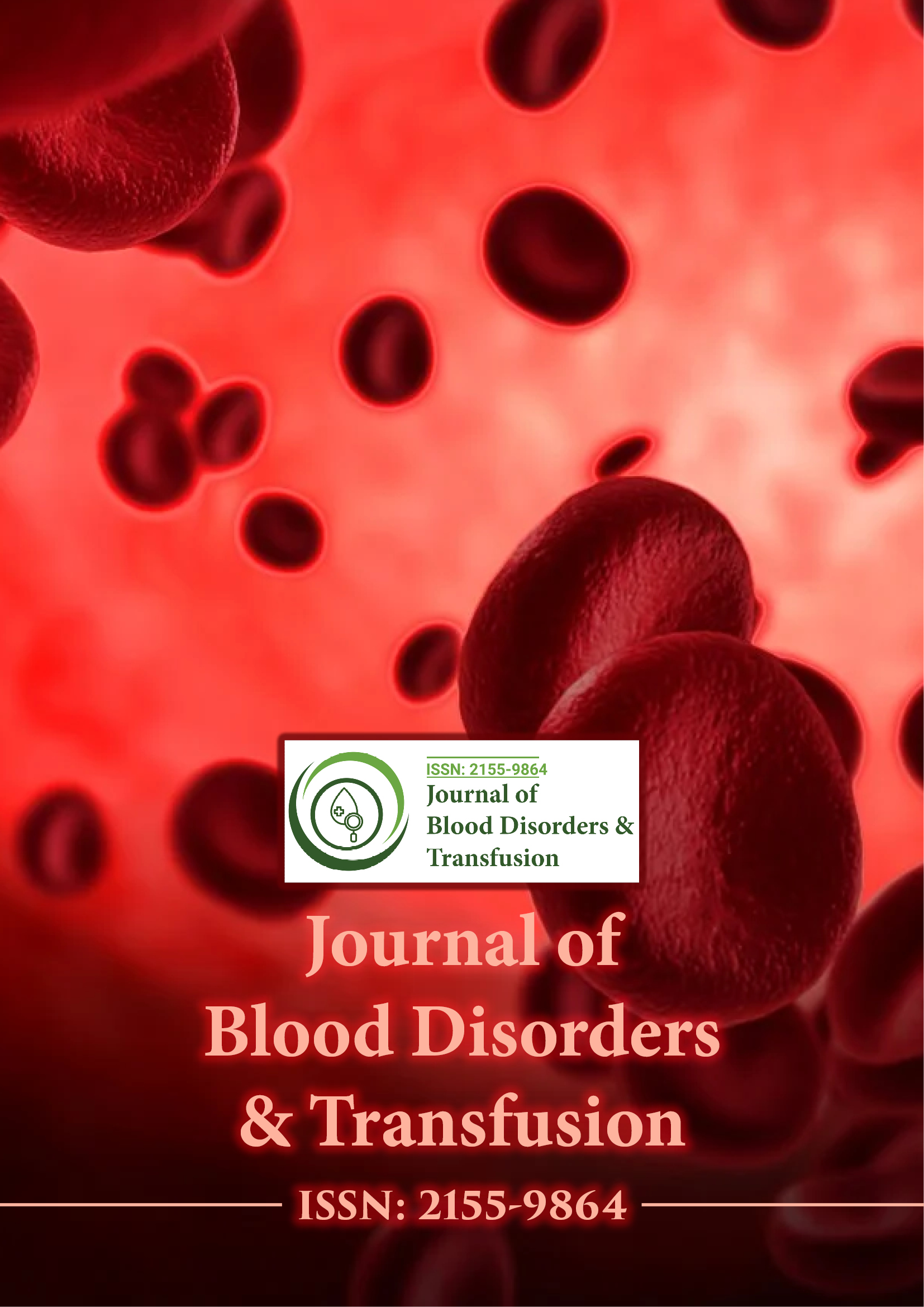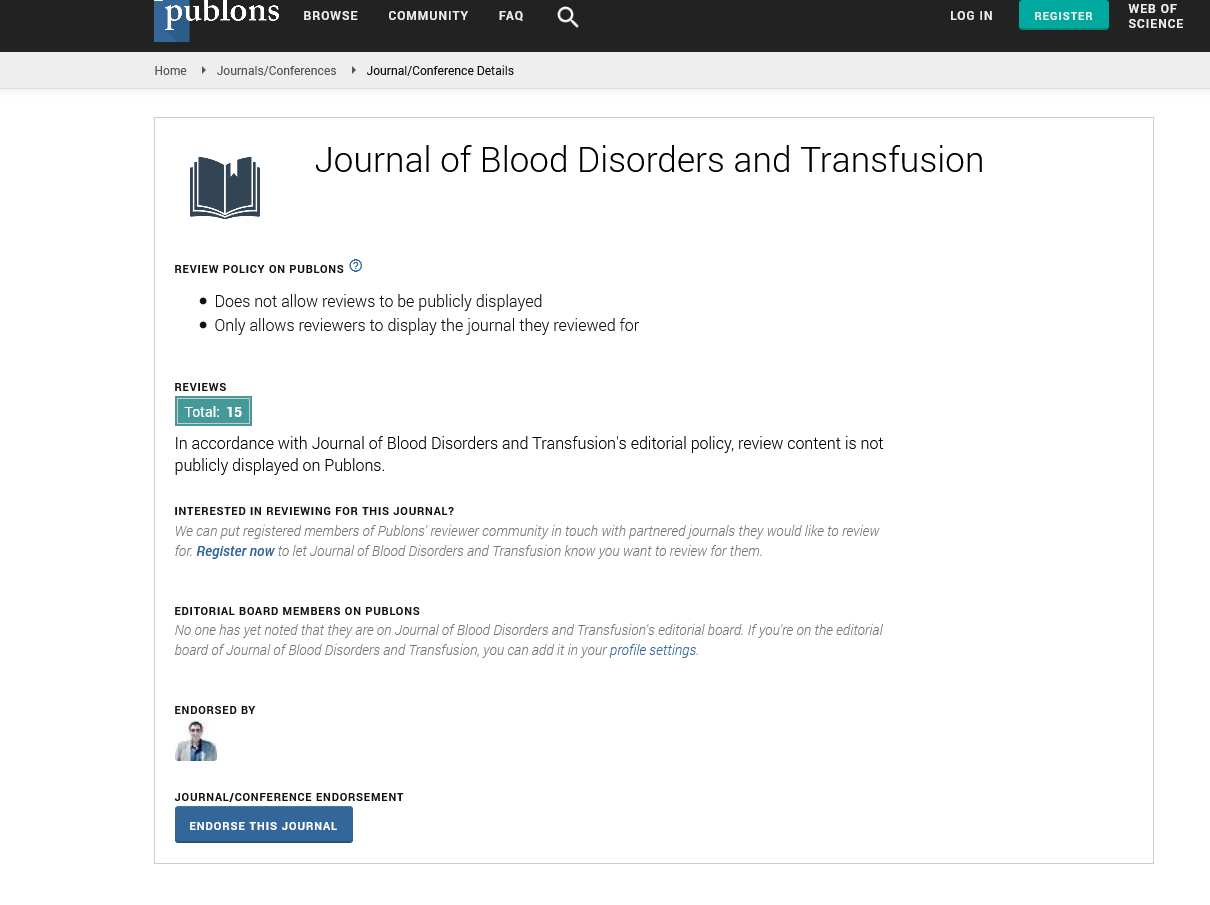Indexed In
- Open J Gate
- Genamics JournalSeek
- JournalTOCs
- Ulrich's Periodicals Directory
- RefSeek
- Hamdard University
- EBSCO A-Z
- OCLC- WorldCat
- Proquest Summons
- Publons
- Geneva Foundation for Medical Education and Research
- Euro Pub
- Google Scholar
Useful Links
Share This Page
Journal Flyer

Open Access Journals
- Agri and Aquaculture
- Biochemistry
- Bioinformatics & Systems Biology
- Business & Management
- Chemistry
- Clinical Sciences
- Engineering
- Food & Nutrition
- General Science
- Genetics & Molecular Biology
- Immunology & Microbiology
- Medical Sciences
- Neuroscience & Psychology
- Nursing & Health Care
- Pharmaceutical Sciences
Opinion Article - (2024) Volume 15, Issue 4
Clinical Manifestations and Management of Hemolytic Anemia
Cloiter Maxie*Received: 22-May-2024, Manuscript No. JBDT-24-26131; Editor assigned: 24-May-2024, Pre QC No. JBDT-24-26131 (PQ); Reviewed: 14-Jun-2024, QC No. JBDT-24-26131; Revised: 21-Jun-2024, Manuscript No. JBDT-24-26131 (R); Published: 28-Jun-2024, DOI: 10.4172/2155-9864.24.15.589
Description
Hemolytic anemia is a condition characterized by the accelerated destruction of red blood cells (erythrocytes) in the bloodstream or within the spleen and liver. This excessive destruction can lead to a variety of clinical manifestations and requires specific management strategies customized to the underlying cause of the condition.
Clinical manifestations
The clinical presentation of hemolytic anemia can vary depending on the severity of red blood cell destruction and the body's ability to compensate for the resulting anemia. Common signs and symptoms include:
Fatigue and weakness: Reduced oxygen-carrying capacity due to decreased red blood cell count can lead to generalized fatigue and weakness.
Shortness of breath: Anemia can cause inadequate oxygen delivery to tissues, resulting in dyspnea (shortness of breath), especially during physical exertion.
Pale skin (Pallor): Decreased red blood cell levels can cause a noticeable paleness of the skin and mucous membranes.
Jaundice: Increased breakdown of red blood cells releases bilirubin, a yellow pigment. Excess bilirubin accumulation can lead to jaundice, characterized by yellowing of the skin and whites of the eyes.
Dark urine: Bilirubin released from destroyed red blood cells can also cause the urine to appear dark or tea-colored.
Enlarged spleen (Spleno-megaly): The spleen may enlarge as it attempts to filter and remove the excessive number of damaged red blood cells from circulation.
Gallstones: Increased breakdown of red blood cells can lead to the formation of gallstones, composed primarily of bilirubin.
Types and causes
Hemolytic anemias can be classified into intrinsic (inherited or acquired defects within red blood cells) or extrinsic (conditions external to red blood cells that lead to their destruction). Common causes include:
Inherited disorders: Conditions such as sickle cell disease, thalassemia, and hereditary spherocytosis result from genetic defects affecting red blood cell structure or metabolism.
Autoimmune disorders: In autoimmune hemolytic anemia, the immune system mistakenly targets and destroys its own red blood cells.
Infections: Certain infections, such as malaria or bacterial infections like Clostridium perfringens, can induce rapid destruction of red blood cells.
Toxins and medications: Exposure to toxins (e.g., lead) or certain medications (e.g., some antibiotics or chemotherapy drugs) can trigger hemolytic reactions.
Diagnosis
Diagnosis of hemolytic anemia involves a combination of clinical evaluation, laboratory tests, and sometimes imaging studies. Blood tests such as complete blood count (CBC), reticulocyte count (a measure of young red blood cells), peripheral blood smear examination, and tests to detect specific antibodies or genetic mutations may be performed to identify the underlying cause.
Management
Management of hemolytic anemia aims to address the underlying cause, alleviate symptoms, and prevent complications. Treatment strategies may include:
Avoidance of triggers: If hemolysis is triggered by medications or toxins, discontinuation or avoidance of these agents is essential.
Immunosuppressive therapy: In cases of autoimmune hemolytic anemia, immunosuppressive medications such as corticosteroids or other immune modulating agents may be prescribed to suppress immune-mediated destruction of red blood cells.
Blood transfusions: In severe cases or acute exacerbations of hemolytic anemia, transfusion of packed red blood cells may be necessary to correct anemia and improve oxygen delivery.
Splenectomy: For individuals with severe hemolytic anemia associated with splenomegaly and ineffective erythropoiesis, surgical removal of the spleen (splenectomy) may be considered to reduce red blood cell destruction.
Supportive care: Symptomatic management includes addressing fatigue with adequate rest, ensuring hydration, and monitoring for complications such as gallstone formation.
Prognosis
The prognosis for hemolytic anemia varies depending on its underlying cause, severity, and response to treatment. In many cases, with appropriate management, individuals with hemolytic anemia can lead normal lives. However, chronic forms or those associated with underlying systemic diseases may require ongoing monitoring and treatment adjustments.
In conclusion, hemolytic anemia encompasses a group of disorders characterized by accelerated destruction of red blood cells, resulting in a range of clinical manifestations from mild symptoms to life-threatening complications. Prompt diagnosis, identification of the underlying cause, and customized management strategies are significant in improving outcomes and quality of life for affected individuals.
Citation: Maxie C (2024) Clinical Manifestations and Comprehensive Management of Hemolytic Anemia. J Blood Disord Transfus. 15:589.
Copyright: © 2024 Maxie C. This is an open-access article distributed under the terms of the Creative Commons Attribution License, which permits unrestricted use, distribution, and reproduction in any medium, provided the original author and source are credited.

